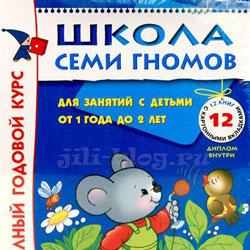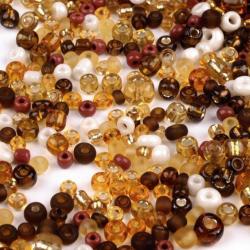How to properly wash white and black and white items in an automatic washing machine and at what temperature? Is it possible by hand and with what powder? How to properly wash in a washing machine: choosing modes and means
- It would be right if you have a laundry basket or a drawer with holes for ventilation next to the washing machine - you can fold and store dirty laundry in it until the moment you decide to start washing.
- Of course, you can store laundry in a basin, but due to dampness it can acquire an unpleasant odor or become covered with mold that is difficult to wash off. Therefore, you need to make sure that the laundry is not wet and that the door to the bathroom is open.
- Sort dirty laundry. Do not put too different items into the washing machine. Lace underwear and items made from thicker fabrics should be washed separately, and wool and linen or cotton should not be washed together. When separating, it is necessary to separate laundry from each other, which requires different water temperatures when washing. The recommended temperature conditions can be found on the sewn-in tags.
- Colored and white linens are also washed separately, as things may fade, and even with such mixing, the colors may change or fade. And things should be washed separately so as not to disturb the structure of the fabric, which consists of fluffy loops.
- Heavily soiled and relatively clean laundry should also be separated.
- Before you start washing, check your pockets - there may be small items left in them that could damage things or the machine during washing, necessary small pieces of paper with phone numbers, paper bills, cigarette tobacco, and the like.
- You should turn your trousers and skirts inside out - this way you will preserve their color and fabric structure longer.
- All things need to be prepared: unfasten buttons, fasten zippers, hooks, tie laces and ribbons, straighten cuffs.
- Look for stains on your clothes. You may need to take preliminary steps to clean stubborn stains.
Handwash
- Delicate items made of thin fabrics (chiffon, natural silk), angora wool, mohair are best washed using liquid laundry detergent. If you don’t have a liquid product on hand, you can use hair shampoo.
- When you pour the powder into the water, do not immediately put the laundry in it. Wait until the powder is completely dissolved. This applies to both washing and soaking.
- Things that are "", should be washed in cold water, and rinsed in water with the addition of vinegar (you need a little of it, 1 tablespoon for 1 medium-sized basin).
- Soft items, as well as items made from terry fabrics, should be rinsed in water with the addition of table salt so that they do not lose their softness.
Washable in a washing machine
- Do not fill the machine to the top; the laundry should be able to flop around freely in the water.
- Observe the proportions of washing powder. Too much or too little powder for a certain amount of laundry can negatively affect the quality of the wash. The ratio of the amount of powder and the amount of laundry can be found in the instructions for the washing machine.
- Make sure that the water is not too hard, otherwise your washing machine will quickly become unusable. To soften the water, you can add a special softener to it, as well as an anti-scale agent so that scale does not form on the working parts of the mechanism.
- Do not load the machine with things of different densities and weights, since uneven distribution of mass in the drum of the machine will lead to excessive vibration - which means noise, bouncing and, as a result, reducing the life of the automatic or semi-automatic machine.
After washing
- Clothes or underwear crumpled after drying or wrung out should be shaken well to smooth them out, and only then hung on a clothesline.
- Some items (such as knitwear or delicate wool) should not be hung to dry as they may lose their shape. It is better to lay them out on the floor, on a chair - on top of a towel or paper, giving them the desired shape.
- It is better not to overdry the laundry, as it sweats and the fibers become brittle. Remove items to be ironed from the clothesline while slightly damp.
- Bright items, as well as items made from delicate fabrics, should not be dried in the sun, as the colors may fade and the fabric may turn yellow.
- If you dry things on, remove them very carefully so as not to break the hardened fibers, let them lie in a warm room so that the product thaws and the fibers become soft.
Washing machines have long become our reliable assistants. Washing machines do a significant part of our household work for us, freeing up time for pleasant and useful activities. Gradually losing the habit of washing, rinsing and twisting clothes, we try to overload washing machines, forgetting about the instructions. And then we are surprised by spoiled clothes and broken washing machines. Let's try to answer the question: which things can be washed in a washing machine and which cannot.
Is it possible to wash delicate items in a washing machine?
What can be classified as delicate things:
- lace items;
- silk linen;
- woolen items;
- delicate handmade items;
- items with decorative inserts - crystals, sequins, beads;
- things with unstable dyes;
- antique, vintage items of clothing.
Delicate items produced in modern production have tags with special symbols that allow or prohibit machine washing. But over time, the icons are erased, and it becomes unclear whether the item can be washed in a washing machine. In this case, you need to understand that the delicate washing mode at low temperature and no spin is as close as possible to hand washing.
To further protect items, you should place them in special laundry bags and, if possible, reduce the time spent in the washing machine.
If we are talking about really valuable things, antique, delicate ones, it is still better to wash them by hand. This way you will have complete control over the washing process and will not spoil the item.
Is it possible to wash shoes in a washing machine?
Few people would think of washing shoes and boots in a washing machine. But sneakers and sneakers are often washed in the washing machine, and not always successfully.
If the washing machine has a shoe washing mode, then washing sneakers will not harm the washing machine. All that remains is to find the washable badge on the sneakers. Found it? Feel free to start washing.
If not, you can take your chances. But you need to keep in mind that the sole may peel off, the leatherette will harden, and the colors will fade.
It is safest to wash lightweight fabric plain and well-stitched sneakers in the washing machine.
Is it possible to wash items with metal inserts in a washing machine?
Items with heavy inserts made of metal, glass, or semi-precious stones are not recommended to be washed in a washing machine because:
- the inserts scratch the walls of the car and leave dents, and a clothes bag is unlikely to help;
- decoration with protruding parts can damage items during washing;
- the insert may separate from the item.
If the insert on the clothing is small, with smooth edges, you can try washing the item in the washing machine in the gentle wash mode, after placing the item in a fairly thick and well-fastened laundry bag. The bag is needed so that the insert does not scratch the inside of the washing machine, and if it comes off, it does not get into the filter or drain hose. Objects falling outside the drum with the flow of water can cause damage to the washing machine.
For the same reason, before washing, you need to check your pockets and take out small change.
Only after checking all pockets can items be safely washed in the washing machine.
Is it possible to wash small items in the washing machine?
Small items such as handkerchiefs, baby socks, laces, ribbons, doll clothes can, of course, be washed in the washing machine. But all small items must be placed in resealable laundry bags. This is because small items often end up in the drain pipe or in the filter of the washing machine with the flow of water. The loss sometimes goes unnoticed, and we will see the handkerchief again only when the master pulls it out of the depths of the idle washing machine.

Is it possible to wash very dirty clothes in a washing machine?
Items with clods of dirt stuck to them should not be placed in the washing machine. Dirt contains solid inclusions of various sizes that will clog the washing machine filter. Therefore, very dirty items should be shaken well and cleaned with a brush before washing.
When washing shoes in a washing machine, you must very carefully remove dirt from the soles. Small pebbles often get stuck in the grooved soles of sneakers, which easily damage washing machines.
If there are fresh stains on things, you need to wash them by hand before putting them in the machine. It is important to know what stains are on things from what substances.
Stains with an unpleasant or strong odor must be washed until the odor is completely eliminated, otherwise the entire batch of clothes may become saturated with the odor during washing. Then you will have to wash things and, possibly, rinse out the washing machine.
You need to be careful about oil stains from gasoline, kerosene and other similar substances. To avoid damaging your washing machine, these types of stains should be washed by hand. Only after this can the item be washed in a washing machine.
What else can and cannot be washed in a washing machine?
You should not wash things in a washing machine that must hold their shape rigidly:
- felt hats;
- men's jackets;
- drape coats.
Items with rigid frames, such as wedding dresses with frames in the skirt, cannot be washed in the washing machine. You will have to take out the frames, wash the item in the washing machine, and then sew the frames back into place.
Some types of items can be washed in a washing machine, but very carefully, at your own peril and risk. These are knitted items that can lose their shape, colored items that fade, blankets, pillows, and down jackets whose fillings can clump together. Whether or not to wash these capricious items in a washing machine, everyone decides for themselves, based on their experience and common sense.
It seems that the rule can be formulated as follows: it is better to wash valuable things that you really don’t want to lose by hand or send them to the dry cleaner. You can try washing everything else in a washing machine, taking into account our valuable tips. And if something goes bad, don’t worry. These are just things.
For high-quality washing of things in a washing machine, you can use

Question: " How to wash white clothes at home?"- repeatedly bothered every housewife. White clothes and underwear require more careful treatment. For example, some people do not recommend washing white items with powder containing colored granules, while some believe that this will not harm the items in any way. One way or another, in our article we will look at which powder is best for washing white clothes, and also find out how you can wash them by hand and in a washing machine.
How to wash white clothes in a washing machine?
To properly wash white items in a washing machine, you need to know that before you put the items in the wash, you must first sort them. Most housewives know that white items should never be washed together with black or colored items, as this may cause the white fabric to become stained. Remember that bleaching white items is not that easy.
Before washing things in the washing machine, you need to sort them by color and, preferably, by type of fabric.
But this is an optional action. You just need to clarify that among the white things there may be your favorite blouse, which will not withstand high temperatures. Check your laundry for such items and wash them separately.
So, the sorting has been done, now all that remains is to find out how to properly wash white clothes in a washing machine. At this stage, you should determine the level of soiling of the items in order to best select the washing mode and temperature. You need to sort white items into heavily soiled and lightly soiled. WITH Heavily soiled white items should be soaked in warm water with added stain remover or bleach before washing. This way you can destroy the toughest stains, making them easier to wash in the washing machine in the future. Leave the items in a bowl of bleach for a couple of hours, then rinse in clean water, and you can wash your white linen along with other white clothes.
Answering the question: “At what temperature should white clothes be washed?” - It should be clarified that the temperature for washing white items in a washing machine depends on the type of fabric. Thus, things can be washed in three temperature modes:
- If in the general pile of things there are clothes that are not recommended to be washed at high temperatures, as indicated by the inscription on the tag, then the washing temperature should be set to no more than 40 degrees.
- Cotton clothing is denser in composition, so you can wash it at the highest temperatures without fear that it may deteriorate.
- Clothing made from linen requires more careful handling, so the temperature for washing it should be chosen from 50 to 60 degrees.
As for the mode in which you can wash white items, you should also choose it based on the type of fabric of your items. Most often, most housewives choose the washing mode for synthetic fabrics, since it is suitable for almost any type of clothing. It helps remove dirt without damaging fabric fibers.
A few more words should be said about the spin mode, since this is also an important detail of any wash. You shouldn't use the highest spin setting, as it can damage delicate fabric fibers and also curls things up too much, making them harder to iron out.
If the item is black and white, then it is better to wash it in a gentle cycle along with white items, so the likelihood that black fibers will stain the white fabric becomes minimal.
Wash by hand
Washing white items by hand at home is not always convenient or advisable. Many people believe that white fabric, which requires a more delicate attitude, should be washed by hand. This increases the chances of a successful wash and also extends the life of such clothes. But not every housewife can properly wash white clothes by hand.
As for the temperature, when washing by hand it should not exceed 60 degrees so that you don't burn your hands. Before washing, you need to soak white items for several hours in hot water with the addition of laundry soap, after which you can start washing. The most contaminated areas must be thoroughly rubbed together by adding washing powder or liquid detergent for washing white clothes to the water, and as for small stains, they will dissolve on their own when soaked.
After you have washed away heavy stains, clothes should be rinsed in clean water and hung out to dry in the sun. If the clothes do not contain patterns, you can add a little bleach to the rinse water: this will help refresh the color of the clothes a little.

Which powder should I choose?
Another question that worries many housewives: “How to choose washing powder for washing white clothes?” Here we want to give you one piece of advice: you should not give preference to cheap powders of domestic or foreign production, since most often they are the least effective. The most popular powders for manual and automatic washing of white items are:
- Tide;
- Ariel;
- Persil;
- Vanish;
- Biolan.
The last two names are domestically produced powders that have been tested over the years and by thousands of housewives, who note that these products are the most effective among all domestic powders for washing white clothes.
When choosing powder for washing white clothes, you need to look at the label carefully, since the powder must be suitable for white things. This doesn't mean they can't wash white, patterned, black and white, black, or colored items. It’s just best suited for white fabric.
Based on this, now you know how to wash white clothes at home by hand or using a washing machine, and you also know how to choose the right washing powder.

The article will teach you how to properly wash things in a washing machine and by hand. You will also learn how to select detergents for washing things.
A good housewife strives to do everything to ensure that things do not become deformed or fade after washing. But unfortunately, sometimes we get a completely different result than we expected. Your favorite item may shrink, fade, or even change its color.
It would seem that everything was done as always, the powder, temperature and program were chosen correctly, but the blouse was still hopelessly damaged. In this situation, the woman has only one choice: throw away the blouse and buy herself a new one. So that you, too, do not have such problems, let’s figure out how to wash things correctly.
Rules for washing in a washing machine
The modern woman does laundry almost every day. And, although this process has long become a fairly commonplace activity, it must be approached with full responsibility. After all, proper and high-quality washing not only prolongs the life of clothes, but also serves as an indicator of the thriftiness of the fair sex.
And so that you don’t have any additional difficulties during the washing process, take care in advance of the place where blouses, dresses and bed linen will wait to be washed. After all, if this place is poorly ventilated, then it is likely that, in addition to dirt, mold will appear on things, and it is unlikely that you can remove it with ordinary powder.
Basic rules for washing clothes in a machine:
Sorting things. Before you start putting things into the machine, be sure to sort them thoroughly. Pay attention to the color, type of fabric, size of the laundry and degree of soiling.
Washing mode. Nowadays, almost all clothes, towels and bed linen have labels on them that say which washing mode will be optimal. Give preference to the one indicated on the tag
Temperature conditions. If the fabric is very dirty, then you can set the temperature to a fairly high temperature, but if the contamination is minimal, then it is better to stay at a medium temperature setting.
Detergents. The best option for cleaning laundry is washing powder. If you prefer liquid products, do not forget that they lose their strength at temperatures above 55 degrees
Machine load. Each machine has a weight limit, so if the instructions say that you can put, for example, 5 kilograms in it, then this should be the weight. Do not pack clothes into the drum under any circumstances; it will be better if it is loaded approximately halfway
Hand washing rules


But no matter how much washing machines make the life of a modern woman easier, there are times when you have to wash clothes by hand. You have to hand wash your newborn baby's clothes, underwear, silk, wool and cashmere items.
It is also better not to put delicate, flowy blouses, lace, dresses and skirts with not very durable paint into the machine. All these things require special care, which the machine cannot give them.
Recommendations to help you wash correctly:
Be sure to soak dirty laundry before washing
Thoroughly dissolve the powder or soap in water
Start cleaning your laundry with the cleanest, lightest items
If the dirt is strong enough, use a brush or washboard
For delicate fabrics, use not very hot water.
After washing, rinse the laundry a couple of times in clean water.
Washing powder: how to choose?

 The quality of washing depends not only on how it is carried out, but also on the means with which it was carried out. Therefore, if you go to the store for powder, then buy exactly the one that suits your clothes. After all, if you plan to clean things in an automatic machine, then hand washing detergent is absolutely not suitable for you.
The quality of washing depends not only on how it is carried out, but also on the means with which it was carried out. Therefore, if you go to the store for powder, then buy exactly the one that suits your clothes. After all, if you plan to clean things in an automatic machine, then hand washing detergent is absolutely not suitable for you.
Usually such powders foam quite strongly, and the machine will not be able to rinse out all the foam properly. As a result, after drying, not very beautiful stains may appear on the fabric, which cannot be removed without repeated cleaning.
Rules for choosing powder:
To wash children's clothes, buy powders that do not contain soda or bleach.
A high-quality and safe product should contain no more than 5% surfactants
There should be a separate powder for each type of fabric
Powder for hand washing must have voluminous and stable foam
If you have hard water, use products that contain phosphates.
Laundry detergents - an alternative to powders: names


We all know that washing powder causes quite a lot of harm to the environment. The synthetic substances that it consists of, when they get into the soil, poison it for quite a long time.
Even for an adult, this product carries a certain danger. Poor-quality powder can provoke allergic reactions, which worsen without appropriate treatment, and wet eczema appears on the skin.
Products that can replace washing powders:
Washing balls. This product is made of special rubber, inside of which there is a magnetic core. If you put it in a drum, the amount of powder used can be reduced by half
Ecological gel. This detergent rinses out much faster and completely dissolves at a temperature of 30 degrees. After using it, no additional treatment with conditioner is required.
Soap nuts. The dry skin of this fruit contains a substance, saponin, which helps rid the tissue of dirt and stains. You can put nuts directly into the drum or prepare a soap decoction from them and add it to water
Laundry soap. Laundry soap is considered a good alternative to modern powders. In addition to the fact that it washes clothes well, it also has bactericidal properties


Clothing and bedding made from high-quality natural fabrics can become severely deformed and shrink if improperly washed. Therefore, before throwing your favorite item into the car, be sure to carefully study the tag.
If it turns out that there is no special tag, then try to independently determine the type of fabric and the required temperature regime. Also don't forget about the powder. If you are washing a fairly bright blouse or dress, then give preference to products for colored fabrics.
Simple recommendations:
First, soak the item in hot water. The temperature should be 15–20 degrees higher than indicated on the tag
Wait until the water becomes warm
Lightly wring out the clothing and place it in a bowl of very cold water.
Rinse everything thoroughly and lay it out to dry.
If you wash with a washing machine, then set the temperature to no more than 60 degrees
For spinning, select standard mode
How to properly wash items made from natural cotton?


In every person's closet you can find things made from cotton fabric. Both adults and children love this fabric for its softness and comfort. But still he has several negative qualities. Cotton clothing gets dirty quite quickly, wrinkles a lot and shrinks if not washed correctly.
Because of these fabric properties, many are afraid to buy cotton items and prefer synthetic fabrics. But you shouldn't be afraid of them. If you wash them correctly and on time, your shirts, trousers and blouses will last you a long time.
Rules for washing cotton items:
Don't get carried away by high temperatures
Wash white cotton with special bleaching powder
Do not wash cotton with synthetics
If there are stains on things, they should be soaked before washing.
After washing, rinse and hang the laundry thoroughly
Do not let cotton items dry out too much


Almost every woman now has a laundry assistant. But no matter how good the machine is, it does not wash all things equally well. Sometimes you take a once snow-white blouse out of the drum, and with nostalgia you remember how white your mother’s clothes were. But she washed clothes without an automatic machine, and there were no high-quality powders then. So let's figure out how to properly wash white clothes so that they don't turn grey.
Rules for washing white clothes:
Remove metal fittings from white items
Prepare a solution of powder and bleach
Place dirty items in the solution and heat them to 50 degrees
Remove the laundry and rinse thoroughly, first in warm water and then in cold water.
If there are gray spots left on the cuffs and collars, repeat the procedure again.
How to properly wash silk items?


Silk items are quite expensive, but if you decide to spend money on such a blouse, robe or bed linen, you will definitely not regret the money spent. Such underwear can warm you up in the winter cold and cool you down in the summer heat. But in order for this delicate fabric to serve you for a long time, it must be washed correctly. After all, if you, for example, clean it with aggressive detergents, it will quickly lose its bright and rich color.
Recommendations for washing silk products:
Natural silk should be washed exclusively by hand
The water temperature should not exceed 40 degrees
After washing, rinse your laundry with vinegar and water.
Never use bleach powder for cleansing.
Wash silk with a special softener
How to properly wash socks by hand and in a washing machine?


All women know that socks are a product that gets dirty very quickly and constantly disappears somewhere. But even if they don’t go away during washing, over time this product will still become slightly untidy and ugly. Most often, their appearance is negatively affected by not quite proper washing. The color of the socks fades, they become covered with pills and become deformed. We will look at how to avoid such problems below.
Basic rules for washing socks:
Clean your socks from dust and dirt and turn them inside out
Sort them by color and fabric type
To prevent socks from getting lost in the machine, use a special bag for washing.
Use a cleaning powder that is suitable for the type of fabric
Never throw socks into very hot water.
Synthetic items can be washed with regular powder
It is best to wash wool and cotton items with laundry soap or special gel.
How to wash terry towels to make them soft?


Every good housewife tries to keep the towels in her home always clean and fluffy. But sometimes, literally after the first wash, this product becomes hard and prickly. Usually women attribute everything to not very high-quality material. Of course, this can also be the reason for the hardness of the towel, but in most cases, washing affects the softness of the towel. If, for example, your water is not very soft and you cleaned your laundry without softening agents, then no matter what you do, your towels will not be fluffy.
Recommendations to help make towels fluffy:
Use only liquid products for cleaning
Do not wash in economy mode
Never bleach your towels
Use stain remover to remove stains
Place a duvet ball in the drum along with the towels.
Spin at the lowest possible speed
After washing, rinse the item with water and conditioner.
Washing is an essential necessity for any independent person. Luckily, doing laundry is not that difficult and it won't take up much of your time. First you need to prepare everything you need for washing, sort the laundry, treat stains and select the appropriate detergent, and then correctly set the washing program and temperature for a specific type of item. Finally, all you have to do is dry your laundry following individual recommendations for each item you wash, which largely depends on the fabric from which it is made.
Steps
Part 1
Sorting laundry-
Place laundry that needs to be washed in dirty laundry baskets. Buy different baskets to sort your dirty laundry right away, or use one shared basket and sort your laundry just before washing. Your specific choice may depend on how much space you have and whether you need to maintain overall order in your home while doing laundry.
- Laundry baskets come in a wide variety. Some of them have wheels or handles for easy transportation. Consider this option if you plan to move the dirty laundry hamper periodically.
- Baskets can also be made from various materials. To save space, you can choose a folding fabric basket. Plastic baskets often have handles for carrying, while wicker baskets do not have such handles - these baskets usually stand in one place and additionally perform decorative functions.
-
Sort items by fabric type. It would be reasonable to sort things into two groups: those made from dense fabrics and those made from light (thin) fabrics. This way you will be able to choose the most suitable wash cycle for specific items.
- For example, put jeans, sweatshirts and trousers made of coarse cotton, jackets and thick sportswear in a group of items made from thick fabrics.
- In another group, combine light T-shirts, blouses and thin trousers.
- Also separate delicate items such as underwear, tights and silk items into a separate group. And create another group of towels and bed linen.
-
Sort things by color into white, light and dark. In addition to sorting items by fabric type, you should also sort them by color to prevent dyes from dark items from ruining white or light items. In the white pile, place white T-shirts, socks, underwear and other durable white items.
- In the light pile, include items in pastel colors, such as pale blue, light green, yellow and pink.
- In your dark laundry pile, include everything black, gray, blue, red and dark purple.






